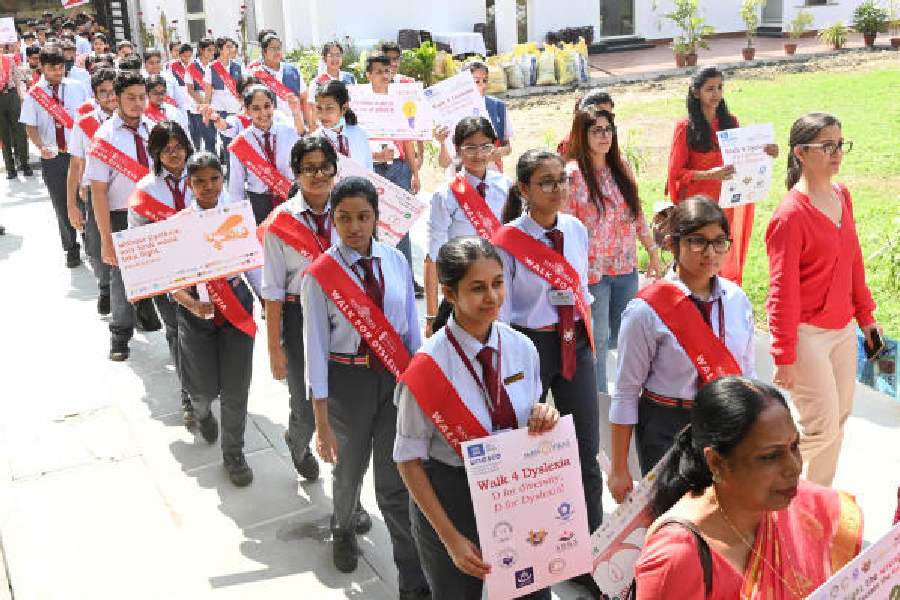A group of school students walked in solidarity with those with dyslexia on Tuesday to raise awareness about the condition so they are better understood and accepted.
There are children with dyslexia in classrooms who lose confidence because their condition is not identified by teachers or even parents, those who work with such students said.
About 200 students wearing red sashes and carrying placards that said “D for Diversity, D for Dyslexia, see the signs, get tested” walked in Madurdaha, outside Manovikas Kendra, a centre that works with children with disabilities.
In the early stages, dyslexia affects language-related skills of an individual. The identifiable signs are difficulty in speaking, reading, spelling, writing and comprehension.
“Dyslexia is a very important area for which we all need to work. They are very intelligent individuals who need a little attention in their academics but in a specific way and once they are given help, they just fly,” said Arundhati Sarkar, director, Centre for Teaching and Training Manochetna (Marc), a unit of Manovikas Kendra.
Sarada Fatehpuria, chairperson emeritus, Manovikas Kendra, said: “I expect all of you to spread the awareness. Please help them (those with dyslexia), they are your brothers and sisters.”
The participating schools included Calcutta International School, Indus Valley World School, Lakshmipat Singhania Academy, Abhinav Bharati High School, Sushila Birls Girls’ School and BDM International.
“They often get bullied in class or school. If there is more awareness about dyslexia they would be understood by their peers,” said Class IX student Navya Priyea of BDM International.
Sarkar later told The Telegraph that individuals with dyslexia can be found in every classroom.
“There are prejudices against them and if they are falling behind, they are seen as lazy or naughty,” she said.
Over the years many brilliant minds have walked through their doors and with the right intervention and support, they have been able to perform, said Sarkar.
“We tell remedial teachers not to use red ink in corrections because there are individuals with dyslexia who are fed up with red marks in their worksheets. They develop a negative association with academics,” she said.
The awareness about dyslexia has to grow both amongst teachers and parents who need to identify a child’s condition.
“There are parents who send children to multiple tuitions but not accept that they have dyslexia,” Anamika Sinha, director, Manovikas Kendra, told The Telegraph.
Before the Walk for Dyslexia, she said: “Every diversity is a challenge. So to express our solidarity and to accept this diversity in every sphere is very much needed.”
Diya Basu, senior psychologist of Maharashtra Dyslexia Association, joined the walk. She said there is better awareness but it was still a long way to go.
“Awareness hasn’t percolated deep. While it is better in cities and big schools, the situation is different in rural areas. If one is not identified then the reason for falling behind would be attributed to some other cause and not to dyslexia. That will be demotivating for the child. The earlier one is identified the more time one gets to work with an individual,” she said.
